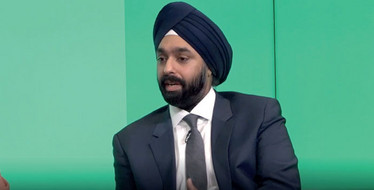
Novel Drugs, New Options
Glaucoma management is changing – in part thanks to the introduction of innovative pharmaceutical classes
With Ike Ahmed, Earl Randy Craven, Marlene Moster, Constance Okeke, I. Paul Singh, and Robert N. Weinreb
At a Glance
- The Advanced Glaucoma Technologies Forum took place in New York, USA, in October 2018
- Pharmaceutical developments play a key role in improving glaucoma surgical procedures
- Finding the right balance between surgical and therapeutic interventions is of vital importance to patient outcomes
- Finances, side effects and patient compliance should all be considered when deciding on the maximum tolerated medical therapy in glaucoma.
Recent years have seen a diverse range of surgical procedures developed for glaucoma treatment. Now, these advances are being complemented by pharmaceutical innovations. Two drug classes – rho kinase (ROCK) inhibitors and nitric oxide-donating compounds, exemplified by netardusil and latanoprostene bunod, respectively – are of particular note. How do glaucoma surgeons view these medications?
Constance Okeke reminds us that insurance restrictions and financial limitations mean that the new drugs are not universally accessible, which limits their impact. “That said, when I’ve been able to use latanoprostene bunod I’ve found it to be a very good addition to the PGA drug class – it acts almost like a first line agent plus an adjunct.” Furthermore, she adds that the drug is useful in both high-IOP and low-IOP patients. In the former case, it has the twin advantages of offering an easy dosing regimen, such that patients remain compliant, and being compatible with selective laser trabeculoplasty (SLT), which can help patients avoid a three-medication regimen. In the latter case, Okeke has used latanoprostene bunod to achieve a four- to five-point IOP drop – from low teens to single digits – which, as she states, isn’t always easy. She is similarly enthusiastic about netardusil: “Simple, once-daily administration and synergism with other drug classes make it a great agent.”

Robert N. Weinreb agrees: “The once-daily regimen is so important in supporting patient adherence – a huge problem in glaucoma,” he says.
Paul Singh emphasizes the benefit of the mechanisms of action associated with the new drug classes: “Netardusil works on the conventional outflow system – Schlemm’s canal, trabecular meshwork. That is very encouraging, because it addresses the actual location of the pathology.” He speculates that netardusil, if used early in glaucoma, may help to maintain the outflow architecture and thereby support the option of MIGS procedures at a later date. Singh also raises the possibility that ROCK inhibitors may have a post-MIGS role: “Perhaps using them after surgery would result in better conventional outflow, or prevent tachyphylaxis?” Finally, he notes that the ability to bring IOPs down from low teens to single digits – a result unattainable with previous glaucoma drugs – suggests that the new drugs may modulate episcleral venous pressure; “and that is what really makes me excited about these new therapies,” he says. Weinreb agrees, and emphasizes the utility of netardusil’s diverse actions – both increasing conventional outflow through the trabecular meshwork and modulating episcleral venous pressure. “No other drugs can get the IOP below the episcleral venous pressure,” he states.

With new surgical procedures and new drugs, the glaucoma management field is changing – how should we balance surgical and therapeutic interventions? Certainly, intensive topical therapy has significant drawbacks (see box), and Ike Ahmed suggests that new surgical procedures, by permitting safer and earlier intervention, may reduce the need for maximum tolerated medical therapy. And Okeke reminds us that a consequence of compliance issues is that patients often do not even take the prescribed medications: “My work with the Travatan Dosing Aid suggested that only 45 percent of patients took 75 percent or more of the scheduled eye-drops. That’s why I talk my patients through laser and surgery options at an early point in the process.” She adds that eye-drops can reduce IOP without improving the outflow – but SLT helps maintain trabecular meshwork outflow function. Singh concurs: “SLT is a great option; it’s safe, and it avoids the toxicity and compliance issues associated with eye-drops.” He adds: “Stent recipients who reacted well to previous SLT had a better outcome, and fewer eye-drops, after stenting than those who responded poorly to SLT – so it has a prognostic value too.”
Overall, physicians are enthusiastic about the new drug classes. For example, Okeke relates that she has saved patients from surgery by adding one of the new drugs to their treatment schedules. But she is also realistic: “Some patients respond excellently, others don’t – the drugs are great additions to the armamentarium, but not magic bullets.” Weinreb notes that it is too early to say exactly where and how the new drugs will fit into glaucoma management, but emphasizes their highly attractive characteristics: namely, once-daily administration regimens and multiple mechanisms of action. As for the future? Weinreb is encouraged by the impending availability of a product that combines latanoprost and netarsudil: two potent drugs in one bottle. His final thought: “Both of the new drugs will have an important role in glaucoma management in the future – and patients need better access to them.”
Maximum tolerated medical therapy in glaucoma
Marlene Moster: “MTMT has two aspects – tolerance of the financial burden and the side-effect burden. Regarding the latter, I would say that three drops – comprising four drugs – is the absolute maximum.”
Paul Singh: “For me, quality of life and patient compliance is now part of the definition of MTMT; it’s about more than just stabilizing IOP and visual field.”
Robert N. Weinreb: “The advent of new surgical procedures has changed the risk-benefit ratio of our options – for many patients with significant drug-induced conjunctival hyperemia, I now wonder if they are best served by MTMT given the likelihood that they will have surgery in the future.”
Ike Ahmed: “I question the utility of giving a fourth drug class to a patient who is already on three drops and whose pressure is in the high teens. Quality of life must influence our decisions, and I often advise early surgery for patients on multiple drug classes.”
Marlene Moster: “I am concerned that intense eye-drop regimens may poison the collector channels over time – which will compromise future angle surgery. Significant ocular side effects may be a signal to change the treatment approach.”
Constance Okeke: “It’s no longer enough to put glaucoma patients on drops and leave them to deal with the side effects.”

The Advanced Glaucoma Technologies Forum was hosted by The Ophthalmologist and supported by Ellex, Santen, Heidelberg Engineering, Reichert Ametek and Aerie Pharmaceuticals Inc.
Ike Ahmed is Assistant Professor at the University of Toronto, Canada.
Earl Randy Craven is Associate Professor of Ophthalmology at Johns Hopkins University, Maryland, USA.
Marlene Moster is Professor of Ophthalmology, Wills Eye Hospital, Philadelphia, USA.
Constance Okeke is a glaucoma and cataract surgery specialist at Virginia Eye Consultants, and also an Assistant Professor of Ophthalmology at Eastern Virginia Medical School, Virginia, USA.
I. Paul Singh is an ophthalmic surgeon at Eye Centers of Racine and Kenosha, Wisconsin, USA.
Robert N. Weinreb is Distinguished Professor and Chair, Ophthalmology, University of California, USA.
